When we went to the Amazon in July, we took shelter from a downpour at the Instituto Amazónico de Investigaciones Científicas SINCHI--the Sinchi Amazonic Institute of Scientific Research, "a nonprofit research institute of the Government of Colombia charged with carrying out scientific investigations on matters relating to the Amazon Rainforest, the Amazon River and the Amazon Region of Colombia for its better understanding and protection." There we met Dr. Clara Patricia Peña-Venegas, who gave me a copy of her extremely informative dissertation on cassava.
When I went back in March, I met with Dr. Peña and asked her what new things she was working on.
WELL. She's working on developing biodegradable, sustainable packaging alternatives to plastic for Leticia and the surrounding communities. Plastic trash is a huge problem for Leticia because (as noted in the post on the world's smallest Coca-Cola bottling plant) everything has to be shipped in and out of Leticia, but that's very expensive, so plastic trash just... piles up.
So she and other researchers at Sinchi have been working on various substitutes, using, among other things, cassava starch--and they have prototypes! These samples look a little battered, but that's because they've undergone various stress tests.
tray made from a palm leaf:

tray made from plant fibers:

Stiff-plastic substitute made from cassava starch. This could be used for things like cups:

5-second video of a flexible-plastic substitute, also from cassava starch:
She said they've tested various different types of cassava, and the starch from all of them works equally well--which is good, because it means that local farmers could keep on growing whatever they're growing now, but some of their produce could go to make these products--assuming there's a way to produce these materials affordably for local hotels and businesses. They have a test plant in the nearby town of Puerto Nariño to try to make this happen.
What's cool about this initiative is that they're not trying to find THE ONE TRUE PLASTIC SUBSTITUTE or dominate the world packaging industry: on the contrary, they're trying only to develop something that will work in this immediate region. This is important because it means it would be self-limiting: you wouldn't get people clear-cutting vast swaths of the rain forest to grow cassava for plastic substitutes, which would be a terrible unintended consequence. But if it's solely for local businesses to use, then it would provide farmers with additional income without too much damage to the forest, it would provide job for people in manufacturing, and it would provide hotels and businesses with an environmentally friendly alternative to plastic, one that would biodegrade and wouldn't clog and pollute waterways.
... On our (motorized) boat ride back from the flooded forest, we were moving through large patches of water hyacinth, and floating in the water hyacinth was... lots of trash. At one point the engine stalled out. Why? Because a plastic bag had wrapped itself around the propeller. That experience highlighted just how bad a problem plastic trash is.
I would love to see other hyper-local plastic substitutes developed. Cassava starch doesn't make much sense for my locale, but maybe potato starch? Things that can be locally produced, so there's not the pollution and expense of shipping. And things that biodegrade. (And of course they need to be produceable without huge amounts of petrochemical inputs, or that, too, defeats the purpose....)
This tweet contains a longer video from SINCHI, where Dr. Peña talks about the program (in Spanish).
When I went back in March, I met with Dr. Peña and asked her what new things she was working on.
WELL. She's working on developing biodegradable, sustainable packaging alternatives to plastic for Leticia and the surrounding communities. Plastic trash is a huge problem for Leticia because (as noted in the post on the world's smallest Coca-Cola bottling plant) everything has to be shipped in and out of Leticia, but that's very expensive, so plastic trash just... piles up.
So she and other researchers at Sinchi have been working on various substitutes, using, among other things, cassava starch--and they have prototypes! These samples look a little battered, but that's because they've undergone various stress tests.
tray made from a palm leaf:

tray made from plant fibers:

Stiff-plastic substitute made from cassava starch. This could be used for things like cups:

5-second video of a flexible-plastic substitute, also from cassava starch:
She said they've tested various different types of cassava, and the starch from all of them works equally well--which is good, because it means that local farmers could keep on growing whatever they're growing now, but some of their produce could go to make these products--assuming there's a way to produce these materials affordably for local hotels and businesses. They have a test plant in the nearby town of Puerto Nariño to try to make this happen.
What's cool about this initiative is that they're not trying to find THE ONE TRUE PLASTIC SUBSTITUTE or dominate the world packaging industry: on the contrary, they're trying only to develop something that will work in this immediate region. This is important because it means it would be self-limiting: you wouldn't get people clear-cutting vast swaths of the rain forest to grow cassava for plastic substitutes, which would be a terrible unintended consequence. But if it's solely for local businesses to use, then it would provide farmers with additional income without too much damage to the forest, it would provide job for people in manufacturing, and it would provide hotels and businesses with an environmentally friendly alternative to plastic, one that would biodegrade and wouldn't clog and pollute waterways.
... On our (motorized) boat ride back from the flooded forest, we were moving through large patches of water hyacinth, and floating in the water hyacinth was... lots of trash. At one point the engine stalled out. Why? Because a plastic bag had wrapped itself around the propeller. That experience highlighted just how bad a problem plastic trash is.
I would love to see other hyper-local plastic substitutes developed. Cassava starch doesn't make much sense for my locale, but maybe potato starch? Things that can be locally produced, so there's not the pollution and expense of shipping. And things that biodegrade. (And of course they need to be produceable without huge amounts of petrochemical inputs, or that, too, defeats the purpose....)
This tweet contains a longer video from SINCHI, where Dr. Peña talks about the program (in Spanish).


































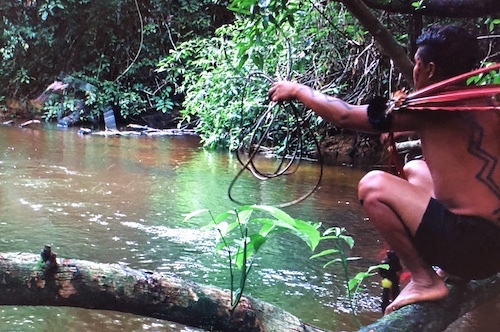
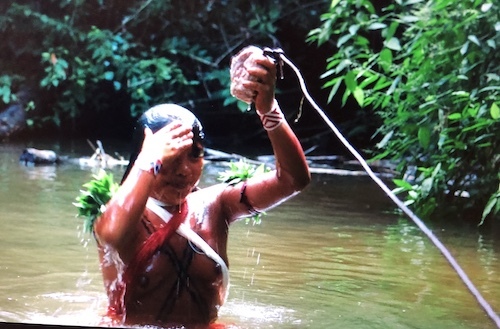
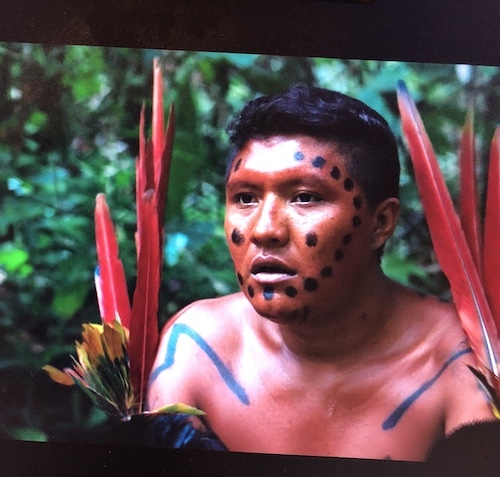
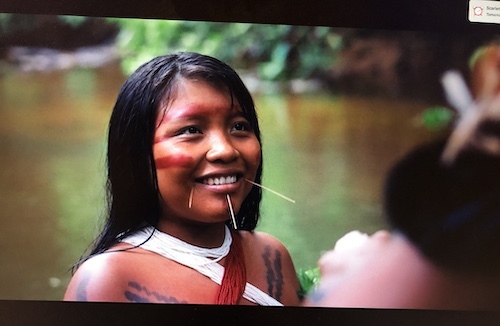
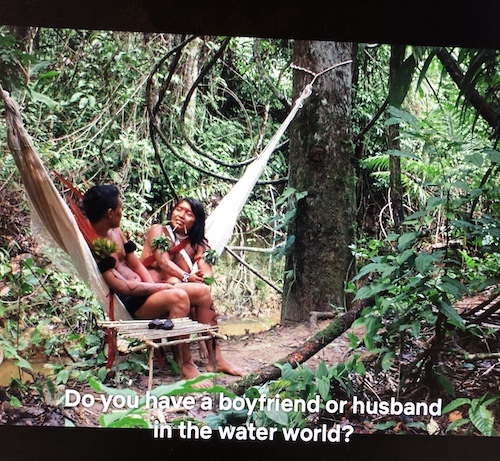
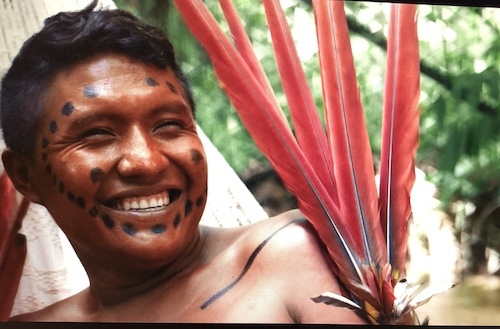
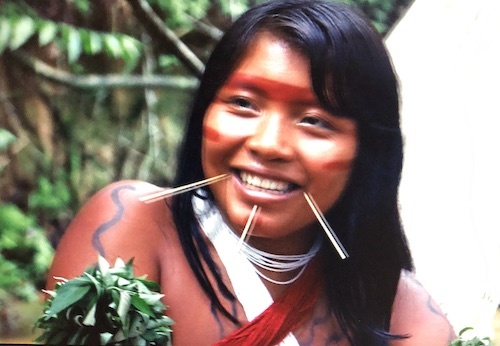
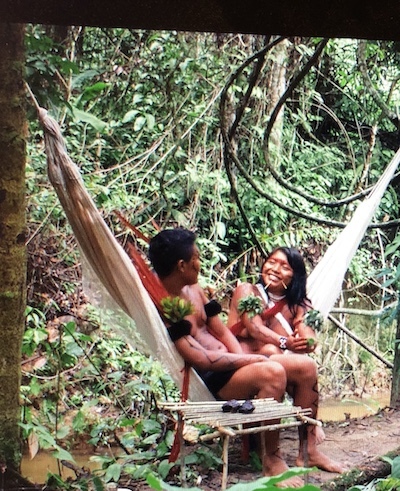


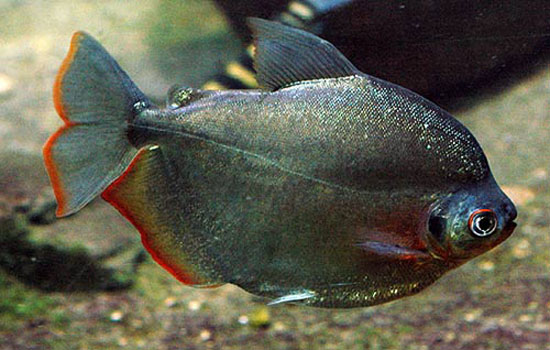




.jpg)


